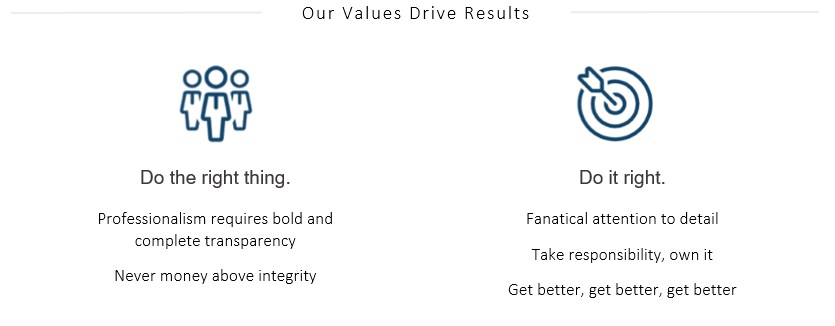Archives
Featured
News and Updates
25 Years Later: Celebrating PCI’s Mission to Improve the Financial Security of American Workers
Last Updated: January 01, 2020


This year, Pension Consultants, Inc. (PCI) is celebrating 25 years in business! It’s been 25 years of powerful innovation, commitment, and hard work to succeed in our mission – improving the financial security of American workers. This has been our goal from the beginning, all while we continue to strive for excellence and provide Good Plans for our clients. Doing our job well for the fiduciary committees we serve affects hundreds of thousands of individuals and their livelihoods, a responsibility we do not take lightly. Through our industry changes, through our business changes, and through the world’s changes, we continue to focus on our mission, and drive results to improve the financial future of those we touch.
Let’s take a moment to look back at PCI’s history, so that we can understand where we are now, and where our future will lead us.
The Beginning – The State of it All
The year is 1994, and the retirement plan advisory industry was still in what we like to jokingly call the “Wild Wild West.” The Tax Reform Act of 1986, which established the first comprehensive 401(k) rules, was still in its infancy. The 1996 96-1 Interpretive Bulletin was just a twinkle in the Department of Labor’s (DOL) eye, and the term “fiduciary” didn’t pack the punch we know today.

Brian Allen, Founder and Chairman of PCI, saw disconnects between what the established industry rules and regulations were and how employer-sponsored retirement plans were being managed. He also saw a lack of transparency and accountability from advisers to their clients. With those ideas at the forefront of his mind, he set out to create a transparent, fair business model that would make a difference in the industry and bring accountability to those he served. And so, PCI was founded.
The Nineties – We’re Still Figuring It Out
Though said jokingly, the retirement plan advisory industry was still something like the Wild Wild West. Although rules, regulations, and compliance standards for 401(k)s were established, few were paying attention or understood the implications that came with them. Fiduciaries, who were unknowingly carrying the most liability, did not have resources available to them to understand the weight of the role, or provide guidance in how to execute it. In fact, at this time, fiduciary liability was almost laughable, with few industry experts taking it seriously.
Brian, however, was not laughing. He was acting. Alongside him was Chris Thixton, QPA, C(k)P®, who was taking on challenges for clients and the company. Chris was in the marketplace, providing critical observations and ideas that shaped PCI’s direction. They spent the first several years of our business keeping plans compliant and employers out of trouble. They also considered who was footing the bill, the participants. Advisers of the time were generally not concerned about who was paying, as everything was growing and everyone in the industry was making money.
Fiduciaries were happy because participants were getting advice and education about being in a retirement plan. Advisers were happy because they were getting paid excessively for unclear services. There was little transparency, and few ways for fiduciaries to know whether they were doing what was in the best interest of participants.
There was a large hole in the system, and the DOL’s radar had not yet locked onto it. PCI, with Brian’s and Chris’ driving force, worked tirelessly to fill this gap. As an adviser, Brian said, “No, we’re going to do it right and do the right thing.” He took it even further, establishing a fee based on assets, rejecting commissions and gifts, and set a maximum “capped” fee for PCI’s services. We provided clear, detailed service contracts and reports. Additionally, all PCI employees were, as they are today, salaried. These were very uncommon characteristics at the time. Advisers were still treating corporate plans like individual plans, while services were purposely lacking in both details and clarity.

The 2000s – The Burst and Its Effect
Then the dotcom bubble burst, and everyone stopped making money. This was the beginning of a new era of plan advising. The holes in the industry were becoming more prominent, and regulatory bodies started to really zero in on where the money was going. The approach of overcharging participants was not cutting it anymore. The song that advisers were singing was starting to change. This helped lead the industry to consider and implement compliance standards. For PCI’s clients, there wasn’t a shift. Our business model was already constructed that way!
In 2006, Jerry Schlicter of St. Louis law firm Schlichter Bogard & Denton, nicknamed “the 401(k) Lone Ranger,” filed 11 lawsuits for excessive fees and breach of fiduciary liability. This was the first significant event to bring nationwide awareness to how and where fees were being charged to plans and participants. The lawsuits started a chain of events that gave fiduciaries a sense of urgency to pay attention. The word “fiduciary” started to pack its intended punch, and many advisers were unprepared.
In 2017, the DOL Fiduciary Rule was introduced, which would force fiduciaries to act in the best interest of plan participants, including advisers acting in a fiduciary capacity. The Fiduciary Rule was one of the most hotly debated topics in finance, with many brokers and investment firms doing all they could to keep it from being enacted. However, once again the fiduciaries that work with PCI slept easily. PCI was already living the Fiduciary Rule and always has been – we were established that way! Thinking ahead and having a strong vision of the future for retirees has been the foundation of PCI for our entire 25 years.
Today – Having a Compliant Plan is Not Enough
There have been significant improvements in plan advising because of the events of the last 25 years. We have seen an alignment with compliance and how plans are being managed. The industry is buckling down and finally starting to follow the guidelines laid out years ago. However, no one is asking the very simple question, “Do I oversee a Good Plan?” One might assume the answer is yes – that simply having a compliant plan, and offering retirement plan benefits, equals overseeing a Good Plan, right? Wrong.
Offering a compliant plan and offering a Good Plan are not synonymous. Now that fiduciaries have a wealth of resources available to them about their liability and meeting regulatory standards, it’s time to focus on the areas of a plan that matter most to participants. At PCI, we believe in a Good Plan. We define that as a plan where the investment lineup outperforms, the fees paid by the plan are low, and employees are on track to retire.

PCI is always looking towards the future and working to stay ahead of the curve. We offer a disciplined and exceptional solution with performance-driven plan management and transparent accountability. We provide the fiduciaries we serve with the opportunity to bring their employees and companies a Good Plan. For us, that means rewarding retirement and succeeding in our mission to improve the financial security of American workers. Many years later, Cody Mendenhall, CFP®, PCI’s Executive Director, continues to carry forward PCI’s original philosophies. They permeate every facet of our business, from how we serve our clients, to our employees, and most importantly, to American workers. We look forward to continuing our work into the next 25 years!
PCI’s archived blog entries are dated, the rules and statutes referenced may have changed. The analysis or guidance within these blog entries may have become stale, dated, or no longer accurate. PCI will not update or change these entries to reflect the latest analysis or development.



